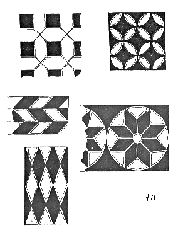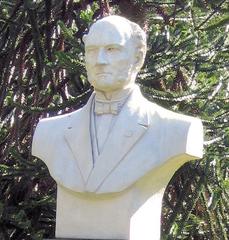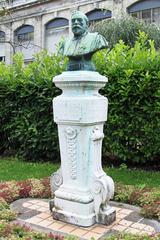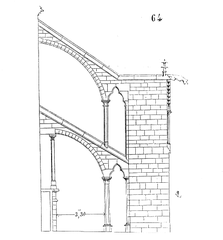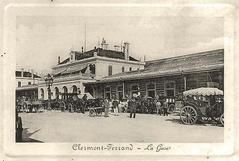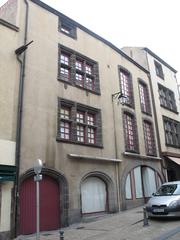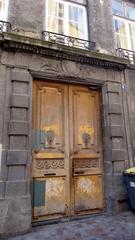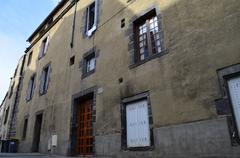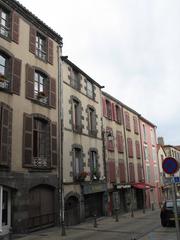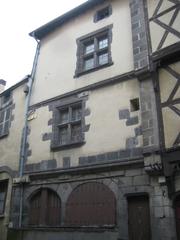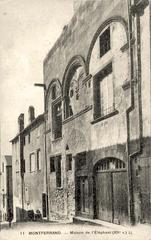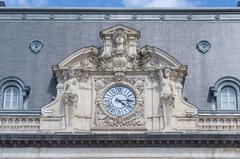Complete Guide to Visiting the Oratoire at 14 Rue Massillon, Clermont-Ferrand, France: Visiting Hours, Tickets, and Nearby Attractions
Date: 14/06/2025
Introduction
Located in the historic heart of Clermont-Ferrand, the Oratoire (also known as Chapelle de l’Oratoire) at 14 Rue Massillon stands as a testament to the city’s rich and evolving heritage. From its Roman origins through medieval and classical transformations, this site bridges the past and present—serving today as a dynamic cultural venue during key festivals and exhibitions. Whether you are passionate about history, architecture, or contemporary art, the Oratoire offers a uniquely immersive experience that reflects Clermont-Ferrand’s enduring spirit and creativity (RACF, 2016; The Good Life France).
Table of Contents
- Introduction
- Historical Overview
- Visitor Information
- Contemporary Use and Cultural Programming
- Planning Your Visit: Tips and Nearby Attractions
- Frequently Asked Questions (FAQ)
- Preservation and Heritage Status
- Conclusion and Call to Action
- References
Historical Overview
Roman and Medieval Roots
The Oratoire is situated in a district that traces its history back to Roman Augustonemetum, chief city of the Arverni tribe. Archaeological discoveries—including luxurious domus adorned with Campanian-style wall paintings—indicate the area’s former status as a prestigious Roman residential enclave (RACF, 2016). Throughout the Middle Ages, the site underwent significant transformation. Roman structures were dismantled and repurposed, fueling the city’s medieval expansion (RACF, 2016).
Architectural Evolution
The Oratoire showcases the adaptation of local volcanic stone—an architectural hallmark of Clermont-Ferrand. Its U-shaped layout, classical facades, and formal gardens reflect 17th- and 18th-century French religious architecture. The main building, constructed under architect Pons and his sons, features refined details such as wrought iron staircases and geometric parterres (Monumentum).
Religious and Cultural Significance
Originally established in 1617 for the Oratorian congregation, the Oratoire became both a spiritual and educational hub. Its chapel, the Chapelle de l’Oratoire, remains a key space for cultural events, blending Gothic ambiance with modern artistic expression (Journées du Patrimoine).
Visitor Information
Opening Hours and Event Access
The Oratoire is not open daily but welcomes visitors during major cultural events such as:
- European Heritage Days (Journées du Patrimoine): Annually in September.
- Arts en Balade Festival: Late May, transforming the city into an open-air gallery.
- Vidéoformes Festival: Celebrating hybrid and digital arts, usually in spring (Vidéoformes Festival).
To plan your visit, always consult the latest schedules on the Clermont Auvergne Volcans cultural agenda or on official event websites.
Tickets and Admission
- Admission: Generally free during public events and heritage days; special exhibitions or performances may require advance tickets.
- Booking: For guided tours or group visits, contact event organizers or the local tourist office in advance.
Accessibility and Facilities
- Mobility: As a historic monument, accessibility is limited—entrances may have steps and there is no elevator. Visitors with reduced mobility should contact organizers for details and possible accommodations.
- Facilities: No permanent on-site amenities; restrooms are available only during events. Dress warmly during autumn and winter due to minimal heating (Concertandco).
Getting There
- Address: 14 Rue Massillon, 63000 Clermont-Ferrand, France.
- Public Transport: Reachable by tram (Jaude or Gaillard stops) and city buses (Mappy).
- Parking: Limited street parking; public garages available nearby.
Guided Tours and Photography
- Tours: Periodically offered, especially during festivals. Advance booking is recommended.
- Photography: Permitted for personal use; flash and tripods may be restricted during performances or as directed by organizers.
Contemporary Use and Cultural Programming
The Oratoire is a lively venue for contemporary art, hosting exhibitions by local and international artists during events like Arts en Balade and the Vidéoformes Festival. Recent installations have included immersive multimedia experiences and site-specific exhibitions that make innovative use of the chapel’s historic space (Videoformes). The venue is also a hub for digital arts, artist residencies, and performances, reinforcing its role in Clermont-Ferrand’s cultural landscape.
Planning Your Visit: Tips and Nearby Attractions
- Event Schedules: Always check official event calendars (Les Arts en Balade, Vidéoformes).
- Dress Appropriately: The chapel can be cold; wear layers during cooler months.
- Combine Visits: The Oratoire’s central location makes it easy to combine with other attractions:
- Clermont-Ferrand Cathedral: Gothic, built of black volcanic stone (Petit Futé).
- Place de Jaude: Lively square with shops, cafés, and public art.
- Medieval Quarter: Explore narrow cobbled streets and historic architecture.
- Dining: Cafés and restaurants abound in the neighboring streets.
- Guided Visits: For groups or educational tours, contact event organizers or [email protected].
Frequently Asked Questions (FAQ)
Q: Is the Oratoire open year-round?
A: No, it only opens during scheduled events and festivals. Consult event calendars for dates.
Q: Are there entrance fees?
A: Most events are free, but some performances may require tickets or reservations.
Q: Is the Oratoire accessible for wheelchairs?
A: Accessibility is limited; contact organizers for specific information.
Q: Can I take photographs?
A: Personal photography is usually allowed; follow event-specific policies.
Q: Are guided tours available?
A: Yes, but primarily during festivals or by arrangement.
Preservation and Heritage Status
The Oratoire is listed as a Monument Historique, ensuring the protection of its unique architectural and artistic features. Restoration and conservation efforts maintain elements such as the blazoned keystone, sculpted supports, and original Gothic stonework (POP Culture). Its recognition as a living monument allows for a vibrant combination of preservation and innovative cultural activity.
Conclusion and Call to Action
The Oratoire at 14 Rue Massillon is a distinctive cultural landmark that fuses centuries of history with forward-thinking art. Its event-driven access, central location, and unique atmosphere make it a must-visit for anyone interested in Clermont-Ferrand’s rich heritage and dynamic cultural life. For the latest information on visiting hours, exhibitions, and ticketing, download the Audiala app, follow the city’s cultural channels, and consult event organizers. Don’t miss the chance to explore this extraordinary site—plan your visit around a festival or special event for the most memorable experience.
Images and interactive maps with SEO-optimized alt tags such as “Oratoire Clermont-Ferrand exterior view,” “Historic stone entrance of the Oratoire at 14 Rue Massillon,” and “Map showing Oratoire location in Clermont-Ferrand” are strongly recommended for an enhanced reader experience.
References
- RACF, 2016
- The Good Life France
- Vidéoformes Festival
- Monumentum
- Journées du Patrimoine
- POP Culture
- Clermont Auvergne Volcans
- Mappy
- Petit Futé
- Audiala
